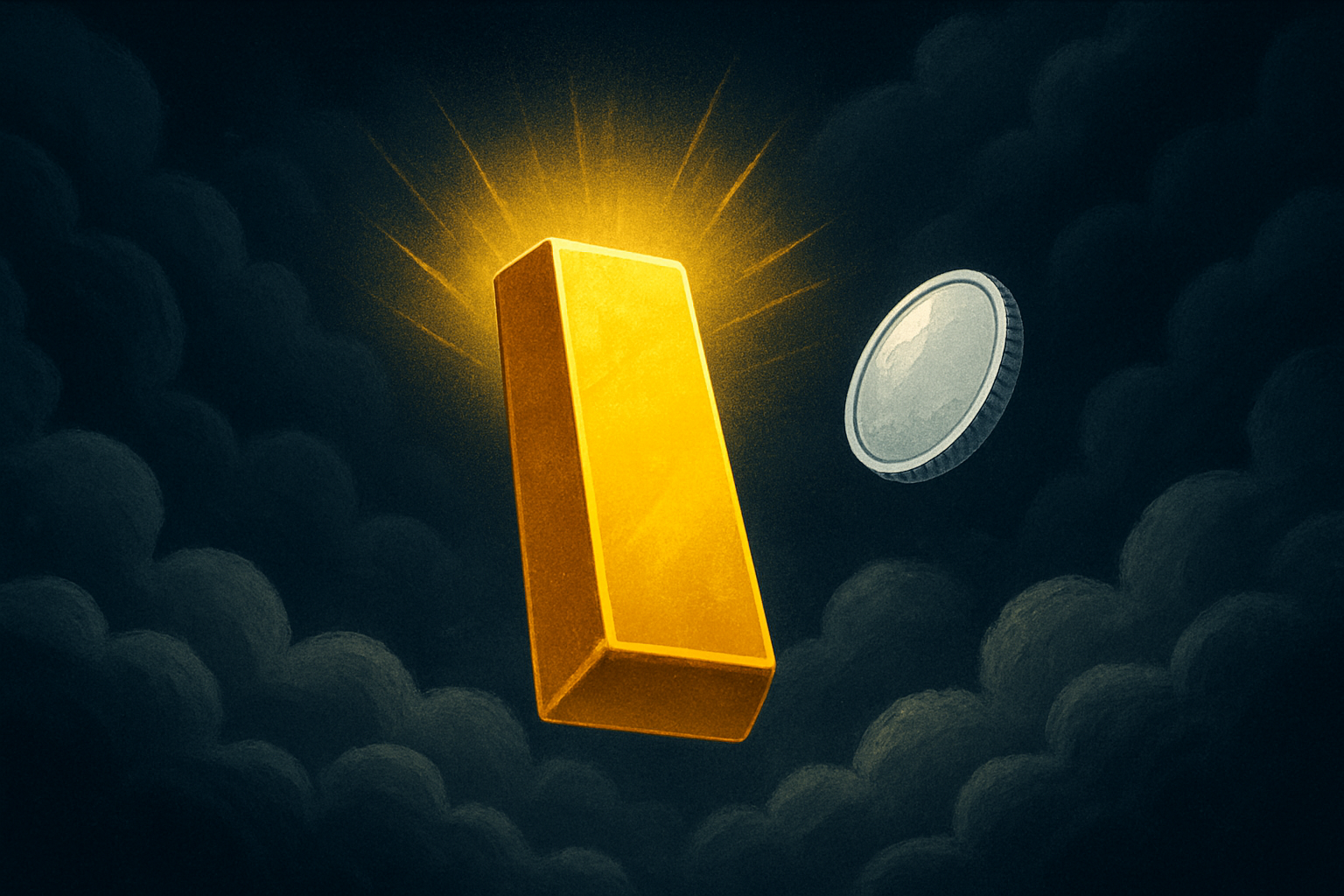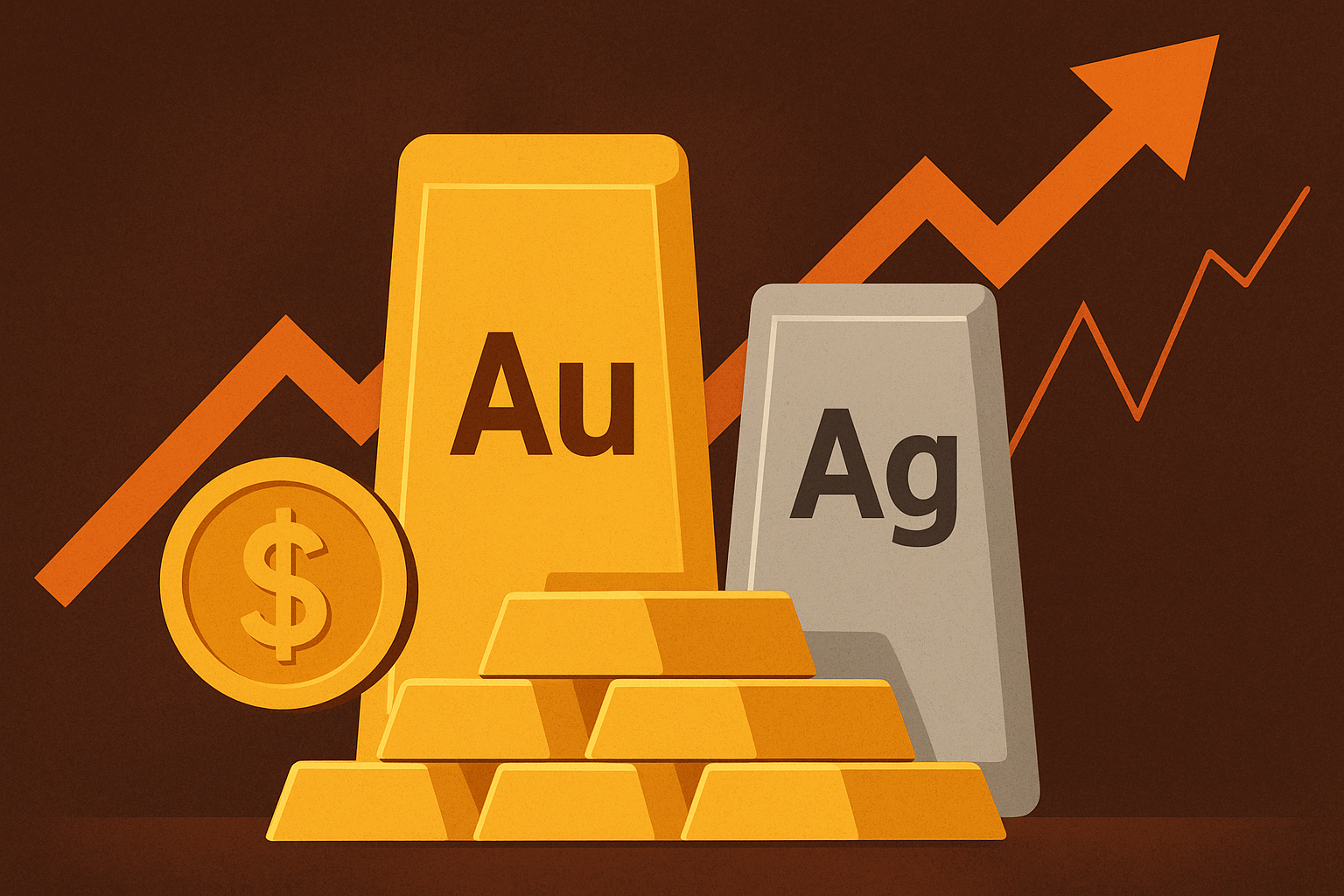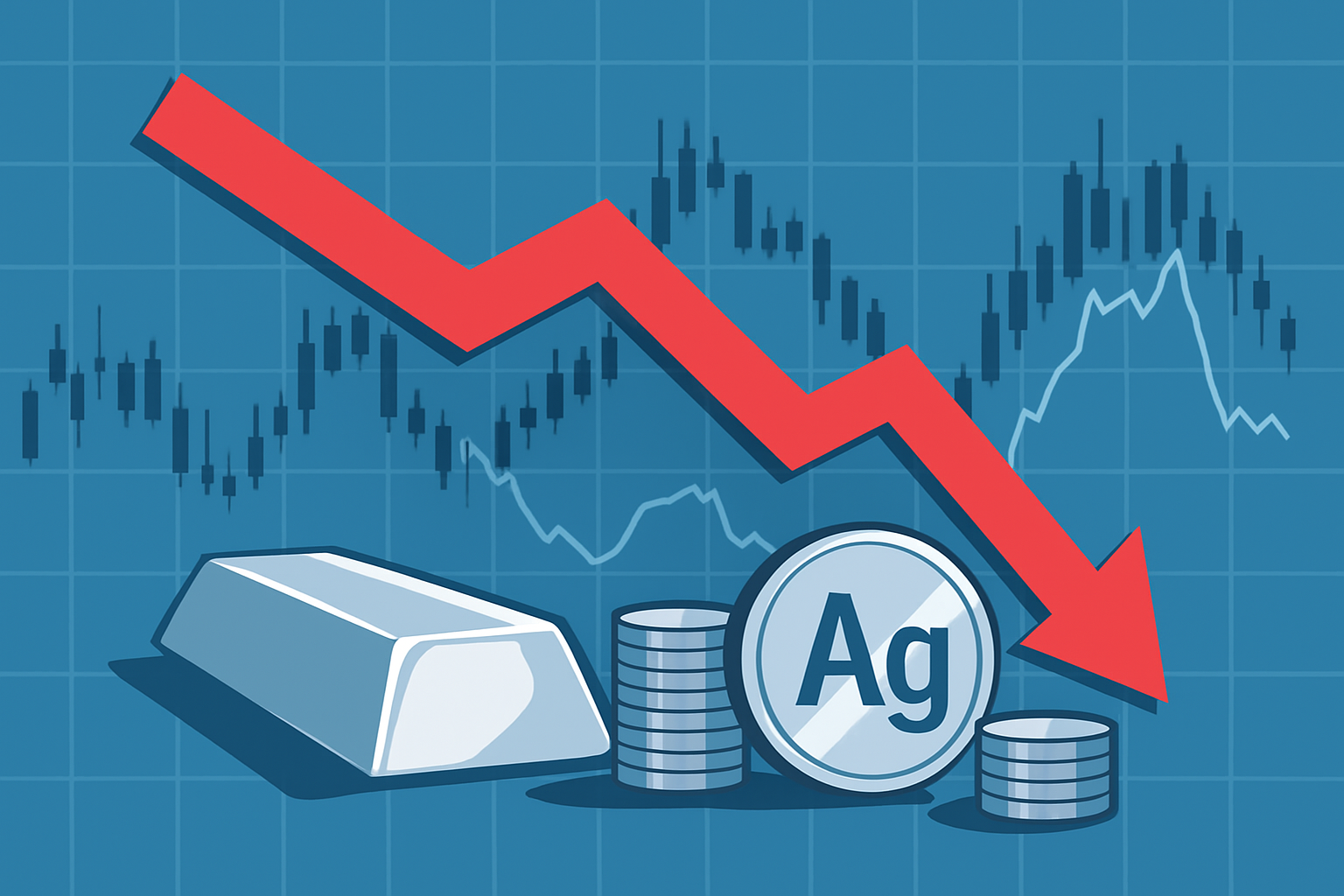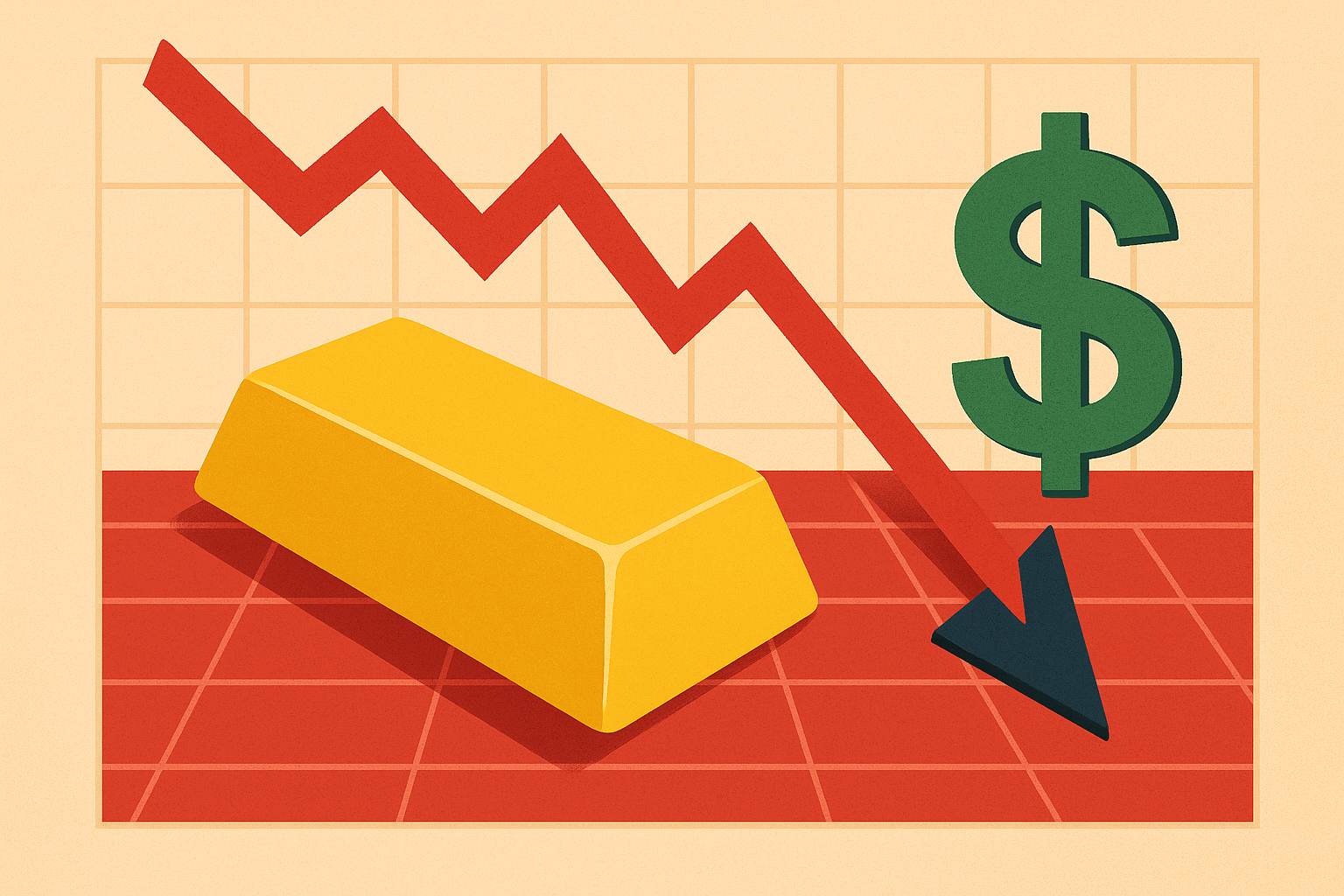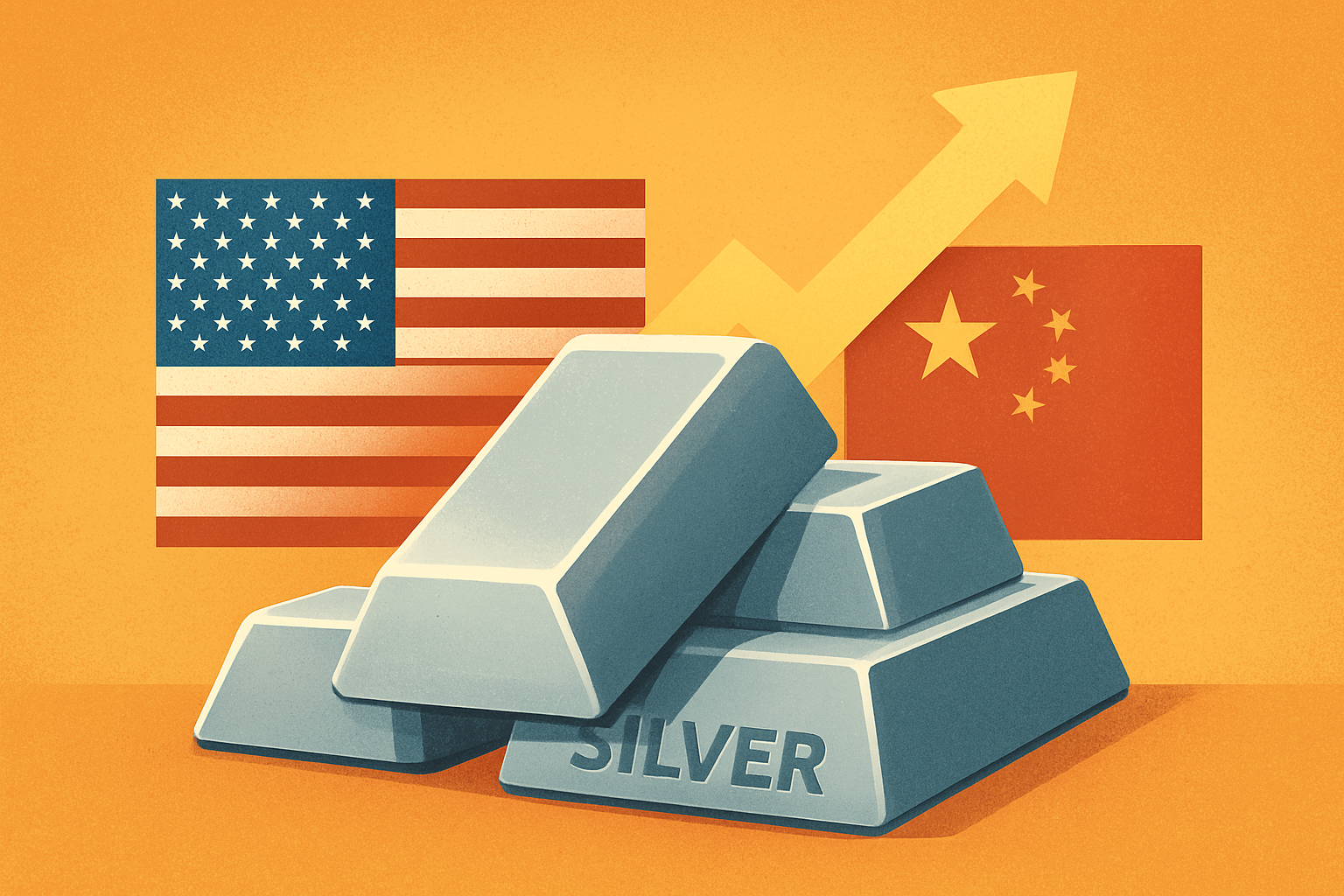Gold prices surged to an unprecedented $3,800 per ounce this week, underscoring the yellow metal’s role as a primary safe-haven asset during heightened macroeconomic uncertainty. Fueled by weak U.S. economic data, rising bets on Federal Reserve rate cuts, and political gridlock over a looming government shutdown, investors have pivoted sharply toward gold. Silver, often seen as gold’s high-beta cousin, has also rallied—posting one of its strongest monthly performances in more than a decade.
Flight to Safety Intensifies
The rapid climb in gold is more than just a technical breakout—it’s a reflection of deeper concerns across global markets. According to Reuters, investors are increasingly hedging against downside risks as the U.S. economy shows signs of slowing, while policymakers in Washington remain deadlocked over fiscal spending.
This combination of softening economic indicators and elevated political risk has amplified demand for tangible stores of value. India, one of the world’s largest gold consumers, imported nearly double the amount of gold and silver in September compared to a year earlier, even as prices surged to record highs. This signals that real, physical demand remains robust, reinforcing gold’s dual role as both a financial hedge and a consumer commodity.
Why This Matters for Investors
The rally highlights the metal’s enduring role as a hedge against inflation, currency weakness, and systemic risk. For institutional investors, this has translated into renewed inflows into gold-backed ETFs and increased activity in the options and futures markets. For retail investors, it provides an opportunity to reassess portfolio allocations in light of gold’s outperformance against equities and bonds.
Silver, meanwhile, is drawing increased attention. Historically more volatile, it tends to amplify gold’s moves. With prices already trending sharply higher, silver offers both greater upside potential and sharper downside risk, making it a speculative but potentially rewarding play for investors willing to tolerate volatility.
Analysts See Further Upside—But Risks Remain
Major banks remain divided on the sustainability of the rally. Analysts at Goldman Sachs have raised their near-term target for gold above $3,900, citing persistent demand from central banks and retail investors. Meanwhile, strategists at UBS caution that if the Fed delays rate cuts or if U.S. macro data improves unexpectedly, the rally could reverse just as quickly as it began.
Political risk remains a wildcard. Any resolution to the U.S. government funding standoff could temporarily ease safe-haven flows, but longer-term fiscal concerns—including rising debt and inflationary pressures—continue to underpin gold’s structural bull case.
Future Trends to Watch
- Monetary Policy: Rate cut timing by the Federal Reserve will be a key driver of gold’s trajectory in Q4 2025.
- Central Bank Demand: Emerging markets, particularly China and India, remain significant buyers. Sustained demand could support prices even in periods of relative stability.
- Silver’s Momentum: If industrial demand strengthens alongside safe-haven flows, silver could outperform gold in percentage terms.
- Mining Equities: Higher spot prices provide leverage for gold and silver producers, though operational costs and jurisdictional risks must be considered.
Key Investment Insight
For investors, gold remains a compelling hedge in the current environment of macro uncertainty and political instability. Exposure can be gained through physical holdings, ETFs, mining equities, or royalty/streaming companies. Silver offers a higher-risk, higher-reward alternative, appealing to those with greater risk tolerance.
That said, caution is warranted: the current rally is heavily dependent on expectations of Federal Reserve easing. Any shift in policy outlook could trigger a sharp correction. Prudent investors may look to stagger entry points or allocate incrementally rather than chase prices at record highs.
At explorationstocks.com, we track these developments daily to keep investors informed on the trends that shape markets. Stay with us for more updates on precious metals, energy transition materials, and the exploration companies driving tomorrow’s supply chains.

